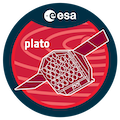Speaker
Description
Planetary system architectures represent an additional class of observational constraints to planet formation and evolution theory besides the ones coming from the overall demographics of (individual) planets and the precise characterisation of specific planets. Examples are the frequency of mean motion resonances, correlations regarding the presence of different planet types within one system or compositional patterns like those in systems with planets on both sides of the radius valley. In this talk, I will discuss our current understanding of physical processes that are important in shaping planetary system architectures both during the initial formation and the long-term evolution phase, and how PLATO could help to constrain them in the future.

